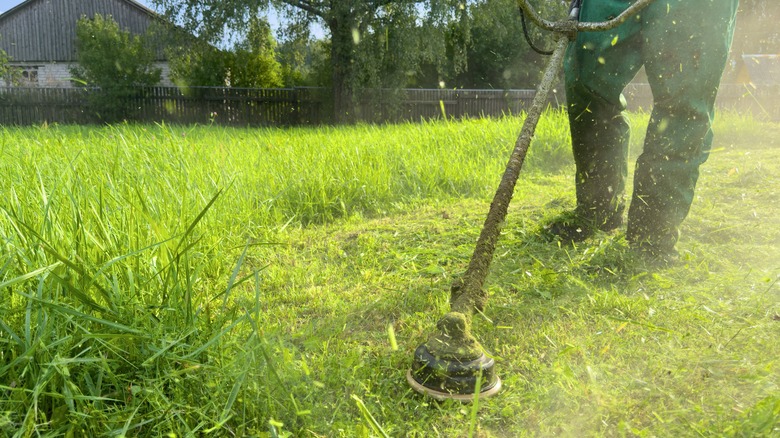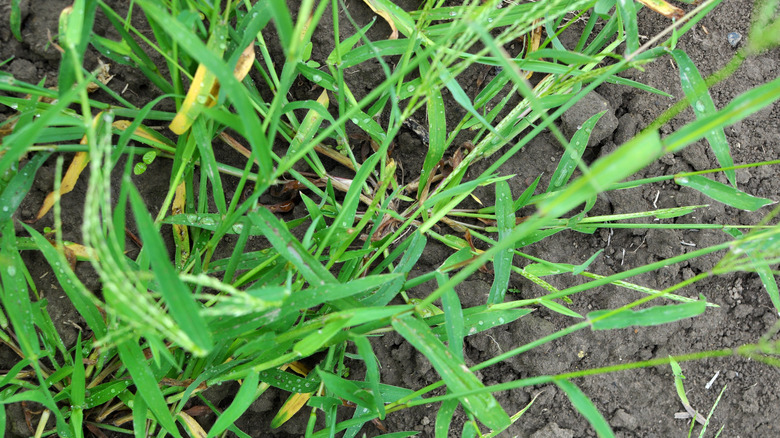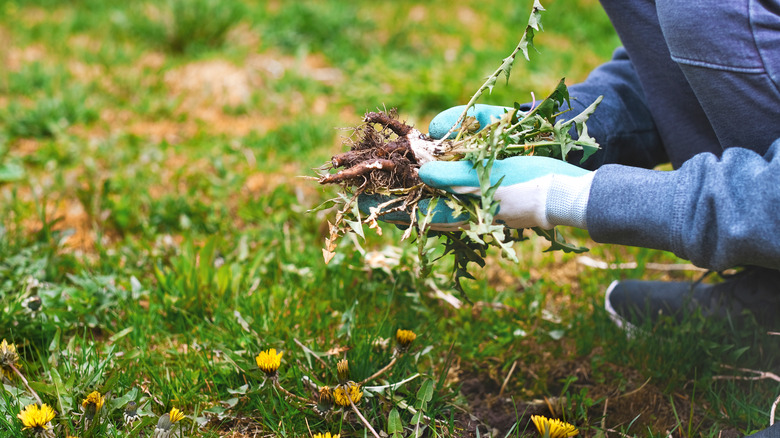Should You Let Crabgrass Win The War In Your Lawn? Here Are The Pros And Cons
Ah, crabgrass. The lawn menace that haunts the dreams of homeowners everywhere. It's sneaky, invasive, and seemingly indestructible. Essentially, crabgrass is the zombie apocalypse of weeds. And just like zombies, it's hard to get rid of once it takes over. Most homeowners want it nowhere near their manicured lawns and go to great lengths to kill and get rid of crabgrass should they see it.
Why? Well, picture this: you spend countless hours and dollars nurturing your grass, only to have crabgrass muscle its way in, taking up precious real estate. That same determination to survive means it is going to make itself right at home on your lawn. But here's where it gets interesting — crabgrass does have a few redeeming qualities. It's hardy, sustainable, and can thrive where other grasses falter. When weighing the pros and cons of whether you should you let crabgrass stay or rip it out, the answer is complicated but leans towards getting rid of it.
What are the pros of crabgrass?
First off, let's talk about why crabgrass loves your lawn so much. Crabgrass is an opportunistic plant. It thrives in hot, dry conditions where your regular grass is probably waving a white flag. This weed is summer's best friend and grows rapidly when temperatures rise. It also loves compacted, poorly drained soil — a condition many lawns suffer from. The thousands of seeds it produces before dying back can remain dormant for years, just waiting for the right conditions to sprout.
Its resilience means that it can survive in conditions that would make other grasses wither and die. Poor soil? No problem. Minimal water? Bring it on. Crabgrass laughs in the face of adversity.
Another perk is that it requires far less maintenance than those high-maintenance diva grasses. Forget about mowing your lawn frequently and constant watering. With crabgrass, you can sit back and relax a bit more. It might be better than traditional grass in some instances, particularly in areas with harsh climates or poor soil quality. But the real question is...is that enough to make it worth growing?
But what are the cons of crabgrass, and what can you plant instead?
Now, let's tackle the cons of crabgrass. First and foremost, it pretty much disappears in the winter, leaving your lawn looking barren and sad. Imagine the heartbreak of seeing your once lush, green lawn turn into a patchy wasteland as soon as the temperature drops. It's not a pretty sight.
Another downside is the aesthetic aspect. Most homeowners take pride in a uniform, green lawn that looks like a thick, green carpet. Crabgrass, with its different texture and growth pattern, disrupts that seamless look. Your lawn might end up looking like it's got a bad case of bedhead — patchy and uneven — which isn't exactly the picture of curb appeal.
Furthermore, its aggressive nature means it can quickly take over your lawn, choking out the other, more desirable grasses. If you're not careful, you could end up with a lawn that's 100% crabgrass and 0% anything else. But fear not, if you don't want actual grass but want something more akin to crabgrass (without the winter die-off), there are some good alternative options. Consider planting a clover lawn, for instance. Clover is hardy, low-maintenance, and stays green year-round.


